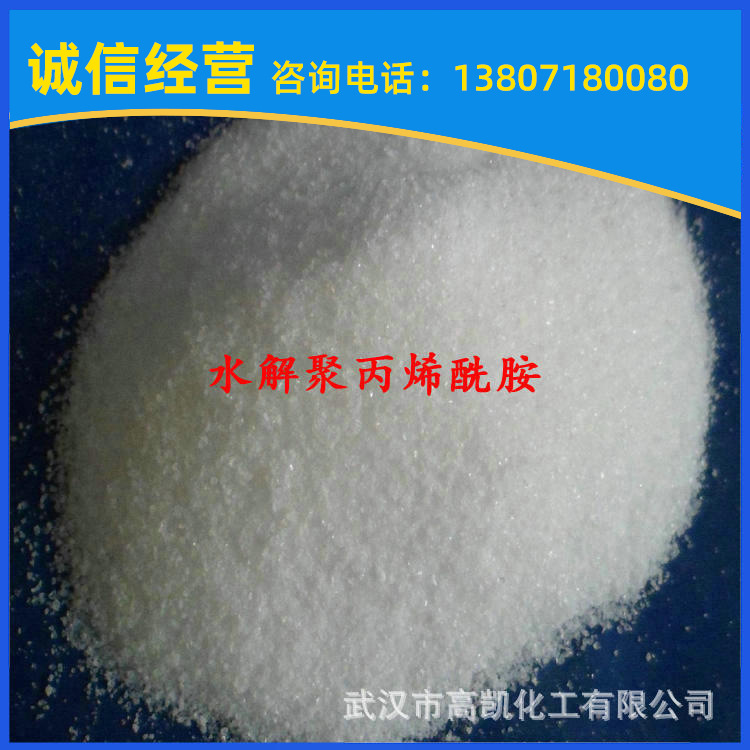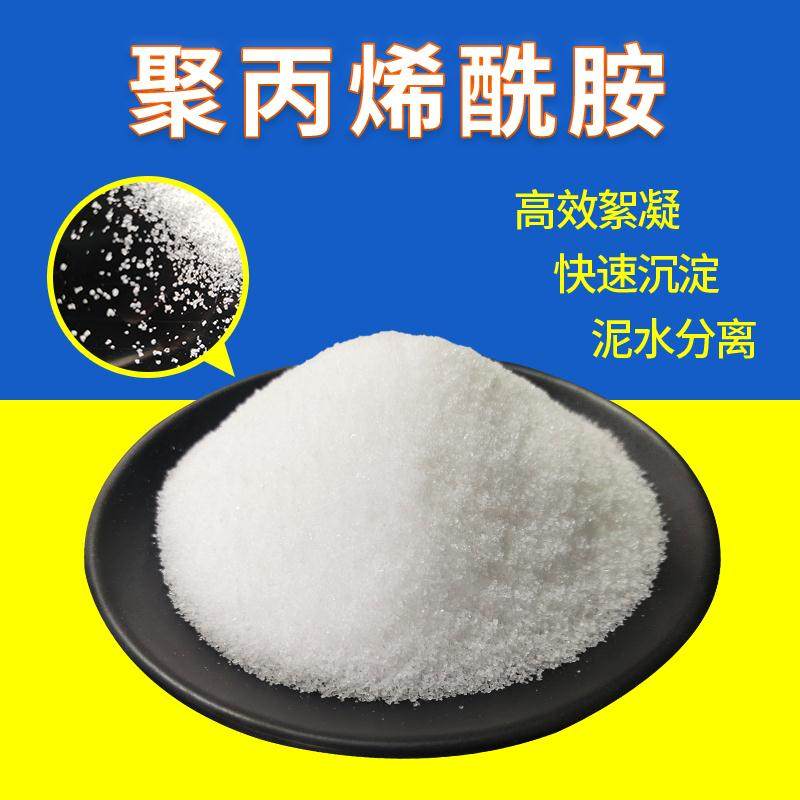
时间:2022-08-15 11:03:25来源:网络整理
《(河北特刊)中考物理复习计划-第6课-分子热运动-内能-比热容-课件-新教育版解析.ppt》会员分享,可在线阅读,更多相关《(河北)特刊高考物理复习方案-第6课-分子热运动-内能-比热容-课件-解析新教育版.ppt(37页珍藏版)》请在熟食图书馆搜索——一个通过共享文件赚钱的网站。
1、第六课分子热运动,分子热运动,分子热运动,分子热运动,分子热运动,分子热运动极微小的粒子_。分子是如此之小,以至于人们通常会制造它们。分子很小,人们通常以_为单位来衡量分子,作为衡量分子和分子热运动的单位。热运动所有物质的分子都在不断地做随机运动,因为分子中的所有物质的分子都在不断地运动。做随机运动,因为分子的运动与温度有关,所以这种随机运动称为与温度有关的运动,所以这种随机运动称为_;温度越高,分子的热运动越大;温度越高,分子的热运动越多_分子,原子分子,原子1010m分子热运动分子热运动
2、暴力与暴力第6课分子热运动内能比热容分子热运动内能比热容测试点焦点测试点焦点探索探索扩散现象定义和定义不同物质相互作用的现象不同物质相互进入的现象称为相互进入时的扩散现象。它被称为扩散作为生命和生命的一个例子。变黑,把煤放在角落里,随着时间变黑。”“”“酒香不怕巷子深”“”“槐花香槐花香”说明一切物质的分子都在不停地做着一切物质的分子在不停地做着_,分子与分子之间存在着_影响因素扩散现象与扩散现象有关,而且温度越高,相关性越强_Contact 接触 不规则运动 不规则运动 间隙 间隙温度 快速温度
3、第6课时,分子热运动,内能比热容,分子热运动,内能比热容考点重点考点重点分子热运动和内能,学习,学习,学习,探索分子间的分子间作用力,分子间作用力,分子之间,分子之间有_,所以固体和液体可以保持一,所以固体和液体可以保持一定的体积;一定的体积;分子之间有一个_,所以固体和液体都很难被挤压,所以固体和液体都很难被压缩和压缩分子分子动力学理论普通物质是由大量普通物质组成的;组成;物质中的分子不断地做着物质中的分子不断地做着_运动;移动;分子之间有分子_总和_引力斥力斥力分子原子分子原子热热引力引力斥力斥力第6课时考点重点探索河北试验
4、希望扩散只能发生在不同物质之间;气体、液体和固体的扩散只能发生在不同物质之间;气体、液体和固体之间可以发生扩散现象,不同状态的物质之间也可以发生扩散,不同状态的物质之间也可以发生扩散。疏散。扩大和扩展对固体、液体和气体物质的宏观和微观性质的理解:了解固体、液体和气体物质的宏观和微观性质: 固态:分子之间的距离很小,作用力很大,而且不容易受到影响。压缩和拉伸固态:分子间距离小,受力大,不易被压缩和拉伸,具有一定的体积和形状;延伸,具有一定的体积和形状;液态:分子间距离大,受力大,更难压缩,无液态:分子间距离越大,受力越大,越难压缩,没有固定的形状,有一定的体积
5、,流畅;固定的形状,具有一定的体积,具有流动性;气态:分子间距离大,受力小,容易被压缩,无气态:分子间距离很小,受力小,容易被压缩,没有固定的形状和体积,流动性强固定的形状和体积,流动性强。第六课 分子热运动、内能、比热容、分子热运动、内能、比热容 物体的所有分子,构成物体的所有分子的热运动,以及热运动的总和分子和分子的总和称为物体的内能,称为物体的内能。决定因素 物体的内能与物体的内能相结合。温度、质量、材料和状态是相关的;物体的内能与温度、质量、材料和状态有关;由于分子
6、它是永无止境的,因为分子永无止境地在做_,所以物体的内能永远是_来改变传热的方式,传热,做功,动能,动能, 势能, 势能, 不规则运动, 不规则运动, 零零, 第六课时, 分子热运动, 内能, 比热容, 分子热运动, 内能, 比热容煮水、晒太阳、煮沸水、吸热、钻木取火、摩擦生热、搓手钻木取火、摩擦生热、搓手取暖补充说明传热条件说明补充说明:物体间有传热条件:物体间有_;传热方向:能量从高温传热方向:能量从高温物体传给低温物体,直到两个物体传给低温物体,直到两个物体的温度和物体的温度_为
7、停止做功有两种情况:一种是外界做功的两种情况:一种是外界对物体做功,物体的内能做功做功,物体的内能_,其他形式的能量转化 对于其他形式的能量转化为 做功相当于改变了物体的内能。传热和做功在改变物体内能方面是等价的。转移,转变,转变分子热运动和内能,温差,温差是一样的。增加内能,减少内能。上课时间,分子热运动、内能、比热容、分子热运动、比热容、分子热运动降低,温度降低,如图6 61
8、 在1所示的实验中,观察到两种现象:一种是胶塞弹起,在所示实验中观察到两种现象:一种是胶塞弹起,另一种是是有很多瓶口。二、瓶口处有大量“白气白气”((液化现象液化现象))。图61 第六课分子热运动、内能、比热容、分子热运动、比热容、分子热运动 叫做热,符号叫做热,用符号_来表示单位单位_(符号:符号:_)与内能与内能的关系 物体吸热,内能物体吸热,内能_; ;放热,内能_说明热是一个过程量,伴随着传热的产生,最终的热量是一个过程量,伴随着传热的产生,
9、 随着它的终止而消失;物体本身没有热量,不能说物体不再消失;一个物体本身没有热量,不能说一个物体“有”或“含有”热量,更谈不上热量,更谈不上“比较”两个物体的热量,只能说两个物体的热量,只有对象可以说该对象“吸收”或“释放”热量和能量。 Q Joule Joule J 增加多少能量减少减少探索不同物质的吸热能力:比较不同物质的吸热能力。探索主题:比较不同物质的吸热能力。
10、内能比热容试验场重点试验场重点研究和研究,实验设计研究如何比较水和食用油的吸热能力差异?如何比较水和食用油的吸热能力差异?方法一:方法一:_;方法二:方法二:_探索探索方法 实验过程中控制水和食用油的质量 实验过程中控制水和食用油的质量_,控制温度升高,控制升高 同温度或相同程度的吸热或相同的吸热量(即加热相同时间,即加热相同时间),这种研究问题的方法,这种研究问题的方法称为_结论质量相等 水和食用油,提高同样的温度,水和食用油的质量相等,如果提高同样的温度,_吸热多,说明水的吸热能力更大,说明水的吸热能力_;物体吸收的热量和物质的种类、质量、温度
11、多少与物体吸收的热量和材料的种类、质量、温度有关。实验改进与改进 实验中可采用加盖或加酒精灯罩的方法来减少热量损失。采用加盖或加酒精灯罩的方法,减少热量散失,吸收等量热量,比较升温多少吸同样的热量,比较升温多少增加同样的温度,比较如何相同温度下吸热增加多少,比较吸热多少相同控制变量方法控制变量方法水水强度第6课分子热运动内能比热容分子热运动吸热容量物理量比热容是描述物质吸热能力的物理量 定义定义_某种物质的质量,当温度升高时,某种物质的质量,当温度升高时,_to与_与_之比,
12、称为该物质的比热比,称为该物质的比热容。使用符号。用符号_表示某种单位质量的物质,温度每降低1单位质量的物质,温度降低1放出的热量,其温度升高1放出的热量。热量相等,其值也等于它的比热容。吸收的热量相等,其值也等于它的比热容。单位_(符号:符号:_)必须吸收一定量的热量,吸收热量,它的质量,和它的质量增加温度乘积c 焦耳每千克摄氏度焦耳每千克摄氏度J /(kg) 第6课时 水的比热容为水的比热容,水的比热容为_,其物理意义: ,其物理意义:_水
13、水温升高(或降低或降低)_吸收(或释放或释放)_为4.2103 J;水的比热容利用大:一是加热,二是散热,三是调节水的比热容。用途:一是取暖,二是散热,三是调节气候和气候。热量公式:_;放热式:放热式:_;如果不考虑热损失,则 Q 吸收 Q 排放 2103 J/(kg) 1 kg 1 热量 热量 Q 吸收 cm (tt0) Q put cm(t0t) 第六课时 分子热运动 内能 比热容分子热运动 内能 比热容 测试点 焦点 测试点 焦点 测试探索 测试探索 点 比热容是物质的一种性质,与物质的质量和温度有关的比热容是物质的一种性质,而与物质的质量和温度有关
14、高低与变化,吸热量或放热量无关;不同物质的比热与热量的变化、吸收或释放量无关;不同材料的比热容一般不同;同一种材料,比热容视状态而定。容量一般不一样;对于同一物质,比热容与状态有关。第6课 分子热运动、内能、比热容、分子热运动、内能、比热容 机械能的定义 机械能定义了构成物体的所有分子,以及构成热运动物体的所有分子其热运动的动能与分子势能之和称为物体内能与分子势能之和,称为物体内能。动能、重力势能和弹性动能、重力势能和弹性势能统称为机械能,性能势能统称为机械能 研究对象微观世界
15、所有分子微观世界的所有分子宏观世界的宏观世界的整个物体的状态与物体的外部运动形式有关;物体与物体的外部运动形式有关;物体的内能永远不会为零,身体的内能也永远不会为零。物体的质量、运动速度、相对高度与运动速度、相对高度和弹性变形程度有关;物体的弹性变形程度是相关的;物体的机械能可能为零身体的机械能可能为零补充说明内能不同于机械能的另一种形式的能量,但可以介于两者之间。内能是不同于机械能的另一种能量形式,但两者可以相互转化。热运动比热容试验场的重点试验
16、重点研究探索2.温度、热量、内能对比 能量增加,物体温度增加,内能增加,不一定吸热,它吸收热量。升高物体吸热,温度不一定会增加晶体熔化,晶体熔化,内能,状态量,状态量增加,不一定吸热。物体的内能不一定吸收热量。钻木取火、摩擦钻木取火、摩擦生热、摩擦生热 检查、询问、询问、试验场焦点、试验场焦点
17、型单分子热运动分子热运动实例1 1 20132013 Ya'an Ya'an 关于分子热运动,下列关于分子热运动的说法正确,下列说法正确的是( () )A A 液体 很难被压缩,说明分子之间有引力。液体难以压缩,说明分子之间存在引力。 B B 用手捏住海绵,海绵的体积变小,说明分子之间有空隙。用手捏住海绵,海绵的体积变小了,说明分子之间有空隙 C C 雾霾天气有大量极细的尘粒悬浮在空气中,说明分子悬浮在空气中在雾霾天气,说明分子在做随机运动,在做随机运动 D D 在做墨滴入水的扩散实验,我们看不到墨。在墨水滴入水中的扩散实验中,我们看不到墨水分子的运动。运动中的分子 分子热传递
18、动能和内能比热容比热容试验场焦点试验场焦点试验场焦点研究目的(2)(2)分子热运动现象及特征; 分子热运动现象及特点;(3)(3)用分子间的相互作用函数来解释生命现象。用分子间的相互作用来解释生命现象。在第六课时很难被压缩,说明分子间有排斥力,分析题表示液体很难被压缩,说明分子间有排斥力,A错;当海绵被挤压时用手挤压海绵的体积变小,用力改变物体的误差;用手挤压海绵,海绵的体积变小,用力改变物体的形状,不能解释两者之间的差距莫分子、形状和分子间
19、有间隙,B错;雾霾天气存在很多极细微的错误;雾霾天气有大量极细的尘粒悬浮在空气中,是一种宏观物体的运动,而微观的尘粒悬浮在空气中,是一种宏观物体的运动,而运动分子的运动是微观粒子的运动,肉眼是看不到的,粒子的运动是微观粒子的运动,肉眼是看不到的。错误的;真假;正确选项为真选项为D. 第6课 分子热运动、内能、比热容、分子热运动、比热容 改变内能有不同的方法,如图6 62 2A在一个快速的地方装有活塞的厚壁玻璃圆筒中的一小块乙酸乙酯
20、乙醚棉,当快速按下活塞时,可以看到气缸中的棉花燃烧,这是通过按压活塞,可以看到气缸中的棉花燃烧,这就是_玻璃缸内空气的制作方法 玻璃缸内空气增加,温度升高,B增加,温度升高,达到乙醚的着火点,棉花燃烧。图B是通过乙醚的着火点,使棉花燃烧。图B是用_的方式将试管中的水加热到沸腾。将试管中的水加热至沸腾。功,功,内能,内能,传热,传热,第6课,分子热运动,内能,比热容,分子热运动,比热容,测试点焦点,测试点焦点,ji测试探索, ji测试探索图,图62,第6课时,分子热运动,内能与热容量相比,热容量可以集中在考点集中考点探究命题角度的探究: 命题角度: (1) (1)内能;内能
意义
21、;(2)(2)通过生命现象考察影响物体内能的因素;通过生命现象考察影响物体内能的因素;(< @3)(3)列举生活例子,认识改变物体内能的方法;列举生活例子,认识改变物体内能的方法;(4)(4)探索内能的变化。可以改变。第6课隧道热能锻炼可以对比热能的热容量来关注热容量测试点来关注测试点来关注询问和探索传热的评论和传热。做功和传热在改变物体的内能方面是等价的。当对物体做功时,物体的内能增加,当物体做功时对外做功,物体的内能减小。这样,内物体的能量增加,物体确实对外做功,物体的内能减少,这样的过程也可能伴随着物质状态的变化。的过程也可能伴随着物质状态的变化。解析功和传热
22、 是改变物体内能的两种方式。图A是做功和传热两种改变物体内能的方式。图A是用功增加气缸内气体的内能,使空气温度升高,用功增加气缸内气体的内能,使空气温度升高,达到乙醚的着火点使棉花燃烧;图B是用酒精灯将试管中的棉花烧到乙醚的着火点;图B是用酒精灯加热试管,就是通过热传递来改变物体的内能。加热是指通过热传递来改变物体的内能。第6课 分子热运动、内能、比热容、分子热运动、比热容,下列关于温度、热量和内能的说法正确,下列关于()物体温度的说法正确
越高
23、,它所含的热量越多,物体的温度越高,它所含的热量就越多 冰块内部的能量必须为零 冰块内部的能量必须为零 D 没有传热发生在两个温度相同的物体之间 两个温度相同的物体之间不发生热传递 D 第 6 课 分子热运动 内能比热容 分子热运动 内能比热容angle: 命题 angle: (1)(1) 正确理解温度、内能、热的物理意义;正确理解温度、内能、热的物理意义;(2) (2)区分生命中与温度、内能、热有关的现象。区分生命中与温度、内能、热有关的现象。第6课分子热运动,内能,具体ic热容、分子热运动、内能、比热容之间的关系
24、、热量和内能。在这个问题中,研究了温度、热量和内能之间的关系。区分时要明确:划分时要明确:物体的内能与物体的质量、温度、状态、种类有关。物体的内能与物体的质量、温度、状态、种类有关,内能永远不会为零;以此类推,内能永远不会为零;热量是过程量,不能说物体的热量是过程量,也不能说物体“含有”或“有”热量;热;传热发生的条件是存在温差。发生热传递的条件是存在温差。第6课:分子热运动、内能、比热容、分子热运动、比热容 或者“有”热有热,所以有量,所以A错;物体的内能与物体的质量和温度有关
25、度数、状态、错误类型;物体的内能与物体的质量、温度、状态、类型等因素有关。高温物体的内能不一定很大,所以与种类等因素有关。高温物体的内能不一定大,所以B错;任何错误;任何物体都有内能,内能永远不为零,所以任何物体都有内能,内能永远不为零,所以C错;发生传热误差;传热发生的条件是两个物体之间存在温差,与物体的内能无关,所以条件是两个物体之间存在温差,与物体的内能无关与物体的内能有关,所以 D 是正确的。确切地。第 6 课 分子热运动内能比热容 分子热运动内能比热容 Test Site Focus Test Site Focus Test Site Focus 63 实验装置如图 3 所示,用于探索水和
26、食用油的吸热能力。开始探索水和食用油的吸热特性。图63 第六课分子热运动、分子热运动、内能比热容、分子热运动、内能比热容(2)根据小明的探索计划,在实验探索的过程中,在除了使用基于小明的相同探索计划外,在实验探索过程中,除了使用相同规格的烧杯和酒精灯外,还需要控制相同的数量是多少?恒定的数量是多少?不同规格的烧杯和酒精灯需要控制吗?第6课:分子热运动、内能比热容、分子热运动、内能比热容3)实验勘探记录数据如下:实验勘探记录数据如下: 加热时间 加热时间 t/min0 水
27、温度水温/33637383940食用油温度温度/3032.53537.54042.54747.55052.555在这些数据中,哪一项最有可能是由于测量或记录的疏忽在这些数据中,哪一项最有可能由于测量或记录的疏忽而出现错误?分析实验数据可以得出什么结论?发生错误?分析实验数据可以得出什么结论?第6课分子热运动、内能、比热容、分子热运动、比热容、比热容(2)(2)熟悉某些物质的比热容;熟悉某些物质的比热容;(3)(3)用比热容解释生命中的自然现象;受益
28、用比热容解释生活中的自然现象;(4)(4)探索:不同物质的比热容;探索:不同物质的比热容物质;(5) (5)比热容和像题。比热容和像题。第六课,分子热运动,内能比热容,分子热运动,内能比热容、考点、考点、考点、考点、考点答案(1)(1)调整下铁夹做石棉网高度合适;调整上下铁夹使石棉网高度合适;调整上铁夹使温度计高度合适。铁夹使温度计高度合适。(< @2)(2)水与食用油具有相同的质量和初始温度。水具有相同的质量和初始温度l temperature as cooking oil.(3) (3)The temperature record of the edible oil on the 66th minute is wrong. The data in the analysis table shows that the temperature record of the edible oil is wrong. The data in the analysis table shows that adding
29、When the heating time is the same, the temperature of the edible oil is higher than that of the water; when the analysis and comparison water is the same heating time, the temperature of the edible oil is higher than that of the water; the analysis and comparison of the water in the fifth The data of 5 minmin, 10 10 minmin and edible oil in the first and edible oil in the 22 minmin, 44 minmin can be seen, the data of the elevated phase can be seen, the same temperature increases, the water needs to be heated longer than the edible oil. , and then the temperature of water absorption is the same, and the water needs to be heated for a longer time than that of edible oil, and then it is concluded that the heat absorption capacity of water is greater than that of edible oil. The heat capacity is greater than that of cooking oil. Lesson 6 Molecular Thermal Motion Internal Energy Specific Heat Capacity Molecular Thermal Motion The question is the hot topic of the thermal experiment questions in the senior high school entrance examination
30、, the question may involve the use of thermometers, the understanding of the concept of specific heat capacity, the hotspots of propositions, the use of thermometers, the understanding of the concept of specific heat capacity, the calculation of heat, etc., in addition, also Applications that may involve the high specific heat capacity of water, etc. Calculations related to heat, etc., in addition, may also involve applications where the specific heat capacity of water is large. Analytical Analysis In the experiment of "Exploring the Endothermic Capability of Different Substances to Explore the Absorbing Capability of Different Substances", in the experiments that need to be used, the measurement tools that need to be used are thermometers and stopwatches, which are reflected by the changes in the number of thermometers. The measuring tools include thermometers and stopwatches. The change in the number of the thermometer indicates the strength of the endothermic capacity of different substances. The same heating time is controlled to ensure the strength of the endothermic capacity of different substances, and the same heating time is controlled to ensure The absorbed heat is equal. It should be noted that the mass of the two substances under control and the initial absorption heat are equal. It should be noted that the control probe
31、The two substances studied should have the same mass and initial temperature. temperature should be the same. Lesson 6 Molecular Thermal Motion Internal Energy Specific Heat Capacity Molecular Thermal Motion Internal Energy Specific Heat Capacity Test Site Focused Test Site Focused Test Sites Coolant, which utilizes the property that the specific heat capacity of water is _(_(optional "big" or "small")).自然。 If the radiator is filled with 3 kg3 kg of water if the radiator is filled with 3 kg3 kg of water, when the temperature of the water has increased, when the temperature has increased by 2020, it has absorbed _J_J of heat. of heat. Known and known c c water water4.24.210103 3 J/(kg) J/(kg) greatly2.52105 Molecular thermal motion, internal energy specific heat capacity, molecular thermal transport, lesson 6
32、Kinetic and internal energy specific heat capacity test point focus test point focus on the test point focus on the test point focus on the test point focus on the test point focus on the test point focus on the test point focus on the test point focus on the test point focus on the test point focus on the test point focus on the test point focus on the test point focus on the test point focus on the test point focus on the test point focus on the test point focus on the test point focus on the test point focus on the test point focus on the test point focus on the test point focus on the test point focus on the test point focus on the test point focus on the test point focus on the test point focus on the test point focus on the test point focus on the test point focus on the test point focus on the test point focus on the test point focus on the test point focus on the test point focus on the test point focus on the test point focus on the test point focus on the test point focus on the test point focus on the test point focus on the test point focus on the test point focus on the test point focus on the test point focus on the test point focus on the test point focus on the test point focus on the test point on the test point on the test point on the test point on the analysis and analysis problem, the use of water as the coolant is the use of water as the coolant. It uses the characteristics of the large specific heat capacity of water; according to the characteristics of the endothermic formula; the calculation is completed according to the endothermic formula Qcmt. Complete the calculation. Lesson 6: Molecular thermal motion, internal energy, specific heat capacity The change of internal energy, the internal energy of the endothermic object increases, the heat transfer process is accompanied by the change of internal energy, the internal energy of the endothermic object increases, and the internal energy of the exothermic object decreases; The internal energy of hot objects decreases; the process of doing work will also be accompanied by changes in internal energy, the internal energy of the object increases, and the internal energy of the external work decreases; the internal energy of the work increases, the internal energy of the external work decreases; The phenomenon also reflects the change of internal energy, and the internal energy will decrease under normal circumstances. It reflects the change of internal energy, and the internal energy will decrease under normal circumstances.
声明:文章仅代表原作者观点,不代表本站立场;如有侵权、违规,可直接反馈本站,我们将会作修改或删除处理。
图文推荐

2022-08-15 11:03:01

2022-08-15 10:14:20

2022-08-15 10:04:05

2022-08-15 10:03:37

2022-08-15 08:05:11

2022-08-15 08:05:01
热点排行
精彩文章

2022-08-15 10:14:23

2022-08-15 10:14:13

2022-08-15 09:31:19

2022-08-15 08:48:22

2022-08-15 08:48:13

2022-08-15 08:05:14
热门推荐
